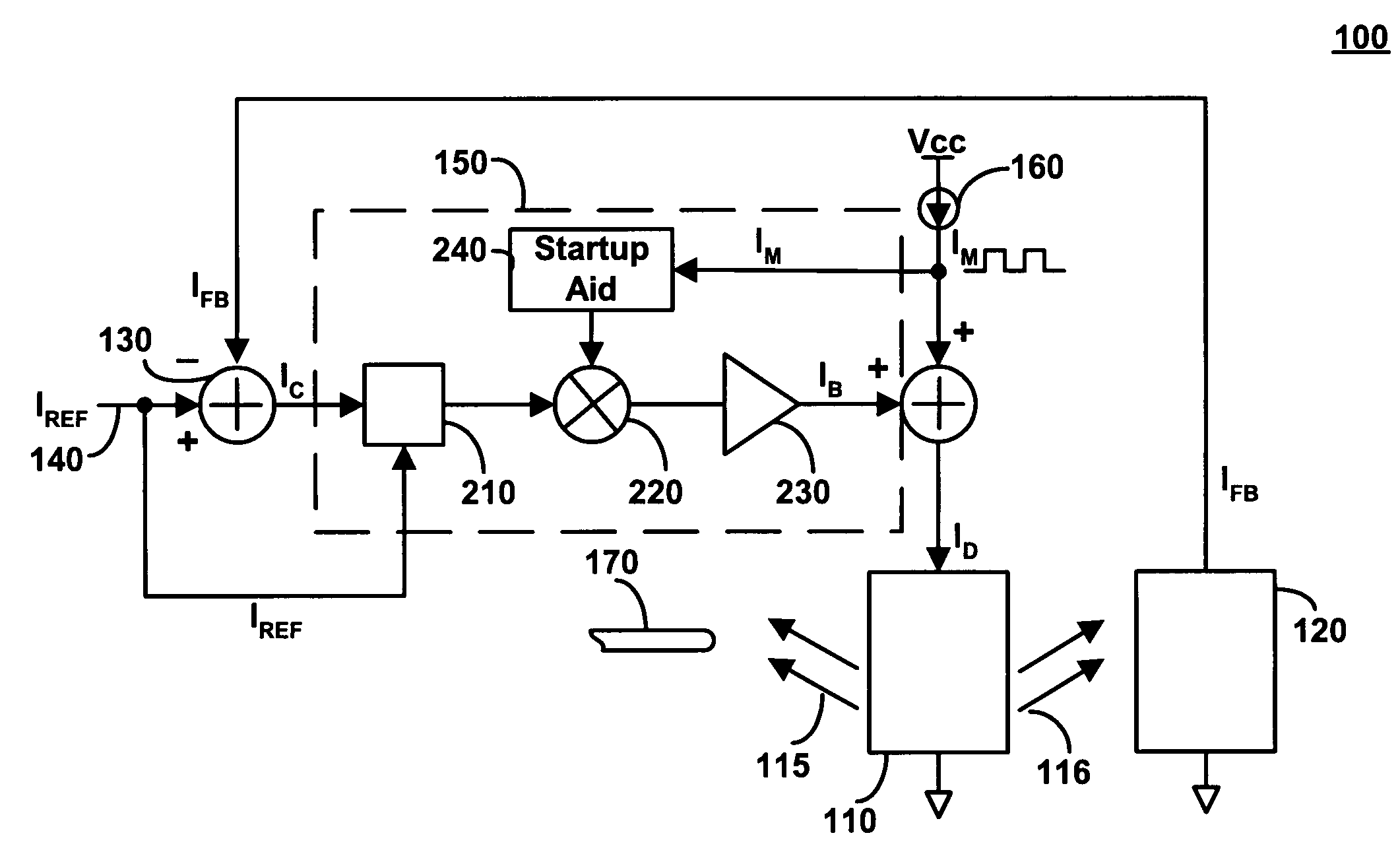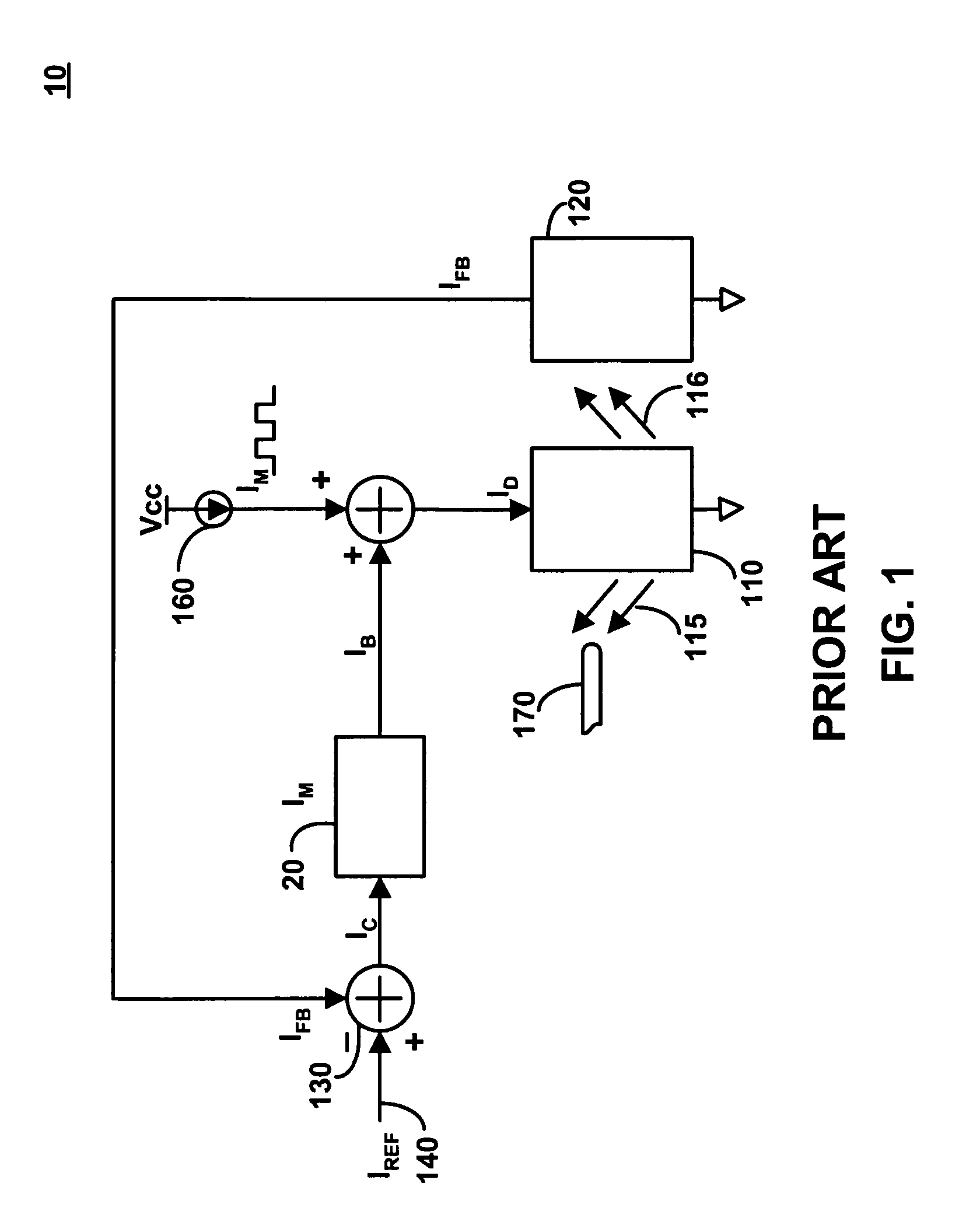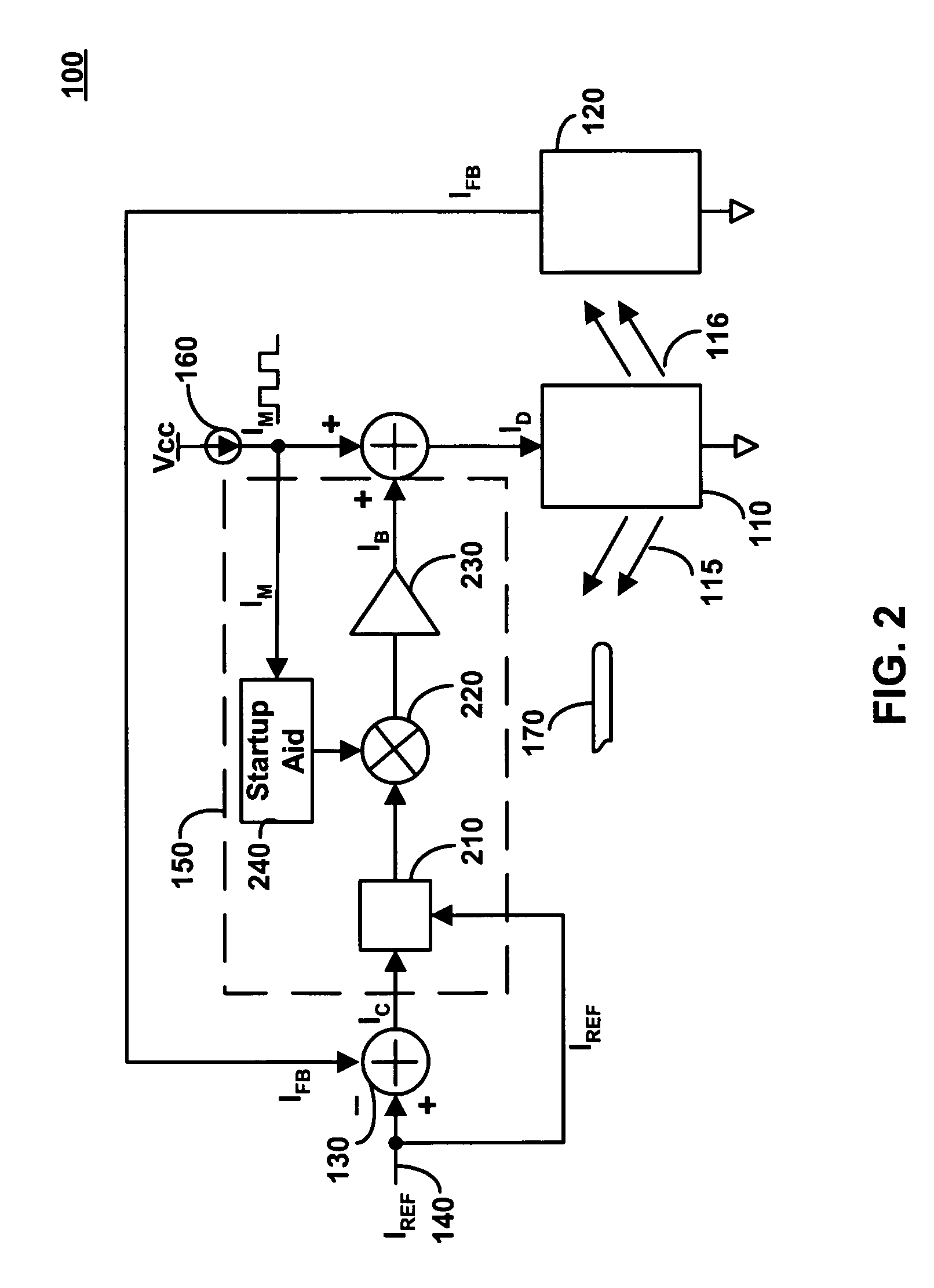Gain normalization for automatic control of lightwave emitters
a technology of automatic control and lightwave emitters, applied in semiconductor lasers, electrical devices, laser details, etc., can solve the problems stability problems, and the effect of reducing the power of optical output signals, improving the control of modulated light sources, and optimizing response time, bandwidth, or steady-state accuracy
- Summary
- Abstract
- Description
- Claims
- Application Information
AI Technical Summary
Benefits of technology
Problems solved by technology
Method used
Image
Examples
Embodiment Construction
[0033]A gain normalization system 100 constructed in accordance with the principles of the present invention is shown in FIG. 2. As in FIG. 1 gain normalization system 100 includes a lightwave emitter 110, a lightwave detector 120, a summing node 130, a reference signal 140, a modulator circuit 160, and optionally, may be coupled to optical transmission medium 170.
[0034]Lightwave emitter 110 may be any suitable controlled lightwave emitting source such as a laser, a laser diode, a vertical cavity surface emitting laser (VCSEL), an edge emitting laser, a light emitting diode (LED), etc. Lightwave detector 120 may be any detector suitable for detecting light such as a photodiode, a phototransistor, a photoelectric detector, a charge coupled device (CCD), etc.
[0035]Gain normalization system 100 has been improved as compared to the system shown in FIG. 1, however, by replacing fixed gain circuit 20 with variable gain circuit 150. As can be seen, circuit 150 is coupled to modulator 160 a...
PUM
 Login to View More
Login to View More Abstract
Description
Claims
Application Information
 Login to View More
Login to View More - R&D
- Intellectual Property
- Life Sciences
- Materials
- Tech Scout
- Unparalleled Data Quality
- Higher Quality Content
- 60% Fewer Hallucinations
Browse by: Latest US Patents, China's latest patents, Technical Efficacy Thesaurus, Application Domain, Technology Topic, Popular Technical Reports.
© 2025 PatSnap. All rights reserved.Legal|Privacy policy|Modern Slavery Act Transparency Statement|Sitemap|About US| Contact US: help@patsnap.com



